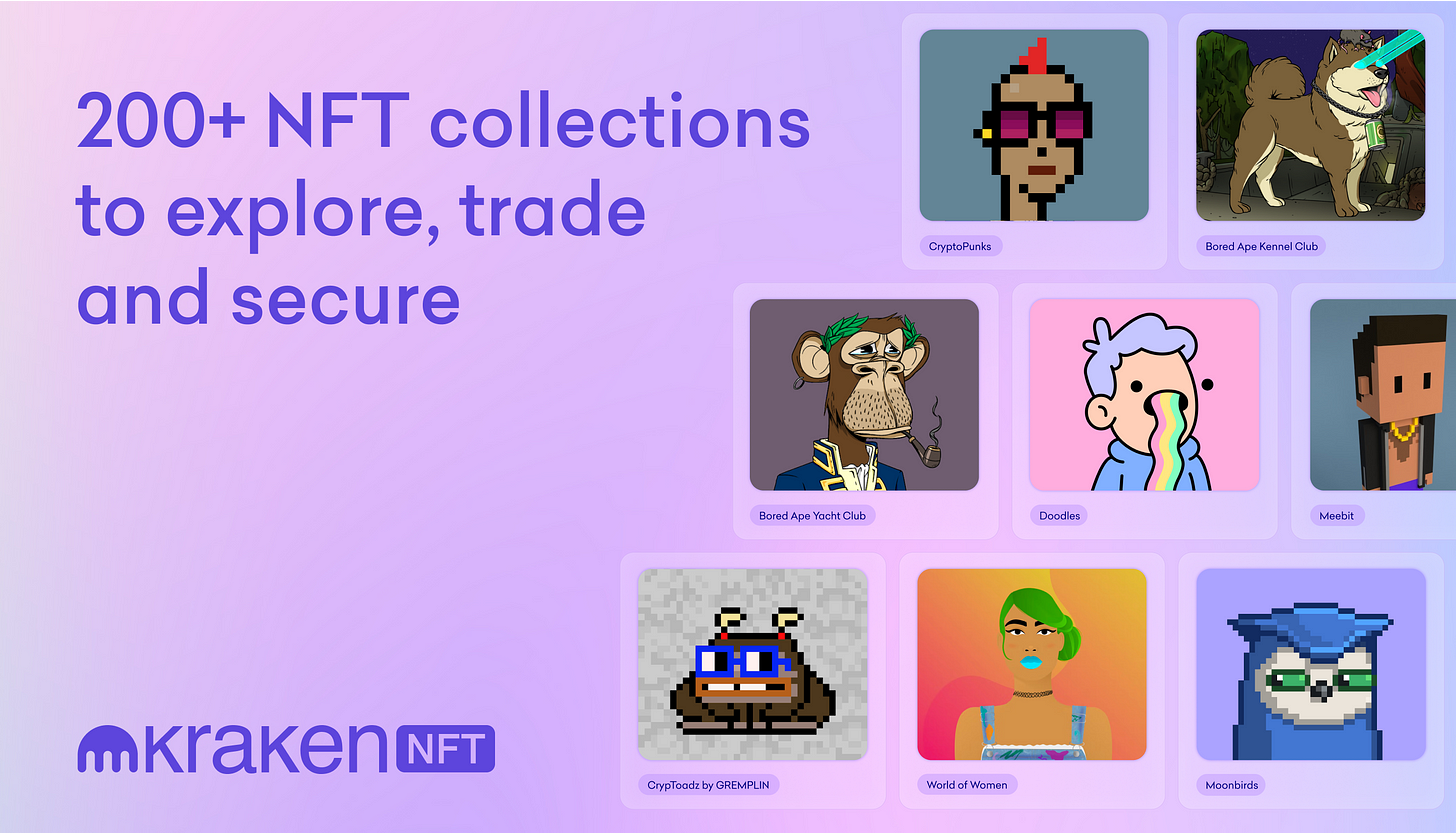Metaversal is a Bankless newsletter for weekly level-ups on NFTs and the onchain frontier
Dear Bankless Nation,
In the Ethereum ecosystem, we have fungible ERC-20 tokens for digital cash use cases and non-fungible ERC-721 tokens for digital collectible use cases.
But what if you could blend the best of both worlds here?
That blending is precisely what ERC-404, a new experimental token standard, was created for.
For today’s post, let’s get you up to speed on the basics of the ERC-404 standard and on Pandora, the first project built using this specification!
-WMP
🔮 Thanks to Kraken NFT 🔮
👉 Kraken NFT is built for secure NFT trading ✨
ERC-404 and Why It Matters
What is ERC-404?
The 101: Developed by the Pandora team, ERC-404 is a new unaudited token standard that aims to bridge the divide between fungible tokens and NFTs.
How it works: ERC-404 creatively mixes elements from the ERC-20 and ERC-721 standards, which are traditionally not designed to interact. Its ERC-721 approach deviates from the norm by relying on token mints and burns for fractional transfers.
“This aspect of the concept’s design is deliberate, with the goal of creating an NFT that has native fractionalization, liquidity, and encourages some aspects of trading / engagement to farm unique trait sets,” the standard’s GitHub reads.
Why it matters: We’ve seen NFT fractionalization protocols where you can lock an NFT and effectively issue shares against it. In contrast, ERC-404 is designed to achieve fractionalization natively within NFT projects that implement the standard. This offers new avenues for experimentation and trading NFTs.
Bankless Citizens who completed the Jito quest in our Airdrop Hunter tool just earned $15k or more 🏹
Don’t miss the next one 👇
The Pandora 101
The basics: Pandora, the first project built on the ERC-404 standard, offers 10,000 ERC-20 tokens and 10,000 associated “Replicant” NFTs. If you buy one full PANDORA token on an exchange, 1 Replicant NFT will be minted to your wallet. If you sell 1 PANDORA token, its connected NFT gets burned.
How rarity works: Every time a Replicant NFT is minted to your wallet, it will appear with a unique rarity. The most common Replicants are green, while the rarest are red.
Accordingly, it’s possible to trade PANDORA tokens to “reroll” the rarities of the Replicants you receive. Since the collection’s name is Pandora and Replicants are currently represented as boxes, it’s safe to say they will “open” to reveal something later.
Supporting platforms: Since ERC-404 is experimental, many platforms won’t automatically be able to support the standard. However, PANDORA is already trading on decentralized exchanges like Uniswap and on NFT marketplaces like Blur and OpenSea.
To the moon: In less than a week since launching, PANDORA and Replicants have seen their value boom as excited traders have piled in. PANDORA has risen +440% in that span to its current price of ~$8,385 (~3.52 ETH), while the floor of Replicants is presently ~3.7 ETH on Blur.
Fad or here to stay?
The bottom line: Pandora is an interesting experimental implementation of the ERC-404 standard. Its code isn’t as gas-efficient as it could be, but it has innovated fractionalization at the level of an NFT’s smart contract, and this pioneering will pave the way for more experiments to come.
What to watch: Going forward, look for more collections to launch atop ERC-404, and look for more platforms to integrate the tech. On the latter front, we’ve already seen some recent embraces by smaller projects like Wasabi Protocol and Peapods Finance.
Be careful: ERC-404 is currently unaudited, meaning it may potentially have vulnerabilities that haven’t yet been discovered. In other words, don’t put more money into an ERC-404 project than you can afford to lose in these early experimental days. Also, when you sell a PANDORA token, the last Replicant you’ve received will be burned—make sure you don’t mistakenly burn one you’re wanting to keep!
Today’s action steps:
-
🧠 Check out ERC-404: Explore PANDORA and Replicants
-
⏰️ Catch up on my previous write-up: Right Place, Right Mint
Author bio
William M. Peaster is the creator of Metaversal—a Bankless newsletter focused on the emergence of NFTs in the cryptoeconomy. He also serves as a senior writer for the main Bankless newsletter.
🙏 Together with 🔮 Kraken NFT 🔮
KRAKEN NFT
Kraken NFT is one of the most secure, easy-to-use and dynamic marketplaces available. Active and new collectors alike benefit from zero gas fees, multi-chain access, payment flexibility with fiat or 200+ cryptocurrencies, and built-in rarity rankings. Learn more at Kraken.com/nft
👉 Visit Kraken.com to learn more and open an account today.
Not financial or tax advice. This newsletter is strictly educational and is not investment advice or a solicitation to buy or sell any assets or to make any financial decisions. This newsletter is not tax advice. Talk to your accountant. Do your own research.
Disclosure. From time-to-time I may add links in this newsletter to products I use. I may receive commission if you make a purchase through one of these links. Additionally, the Bankless writers hold crypto assets. See our investment disclosures here.




